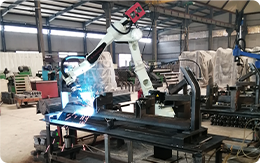 Afrikaans
Afrikaans  Albanian
Albanian  Amharic
Amharic  Arabic
Arabic  Armenian
Armenian  Azerbaijani
Azerbaijani  Basque
Basque  Belarusian
Belarusian  Bengali
Bengali  Bosnian
Bosnian  Bulgarian
Bulgarian  Catalan
Catalan  Cebuano
Cebuano  Corsican
Corsican  Croatian
Croatian  Czech
Czech  Danish
Danish  Dutch
Dutch  English
English  Esperanto
Esperanto  Estonian
Estonian  Finnish
Finnish  French
French  Frisian
Frisian  Galician
Galician  Georgian
Georgian  German
German  Greek
Greek  Gujarati
Gujarati  Haitian Creole
Haitian Creole  hausa
hausa  hawaiian
hawaiian  Hebrew
Hebrew  Hindi
Hindi  Miao
Miao  Hungarian
Hungarian  Icelandic
Icelandic  igbo
igbo  Indonesian
Indonesian  irish
irish  Italian
Italian  Japanese
Japanese  Javanese
Javanese  Kannada
Kannada  kazakh
kazakh  Khmer
Khmer  Rwandese
Rwandese  Korean
Korean  Kurdish
Kurdish  Kyrgyz
Kyrgyz  Lao
Lao  Latin
Latin  Latvian
Latvian  Lithuanian
Lithuanian  Luxembourgish
Luxembourgish  Macedonian
Macedonian  Malgashi
Malgashi  Malay
Malay  Malayalam
Malayalam  Maltese
Maltese  Maori
Maori  Marathi
Marathi  Mongolian
Mongolian  Myanmar
Myanmar  Nepali
Nepali  Norwegian
Norwegian  Norwegian
Norwegian  Occitan
Occitan  Pashto
Pashto  Persian
Persian  Polish
Polish  Portuguese
Portuguese  Punjabi
Punjabi  Romanian
Romanian  Russian
Russian  Samoan
Samoan  Scottish Gaelic
Scottish Gaelic  Serbian
Serbian  Sesotho
Sesotho  Shona
Shona  Sindhi
Sindhi  Sinhala
Sinhala  Slovak
Slovak  Slovenian
Slovenian  Somali
Somali  Spanish
Spanish  Sundanese
Sundanese  Swahili
Swahili  Swedish
Swedish  Tagalog
Tagalog  Tajik
Tajik  Tamil
Tamil  Tatar
Tatar  Telugu
Telugu  Thai
Thai  Turkish
Turkish  Turkmen
Turkmen  Ukrainian
Ukrainian  Urdu
Urdu  Uighur
Uighur  Uzbek
Uzbek  Vietnamese
Vietnamese  Welsh
Welsh  Bantu
Bantu  Yiddish
Yiddish  Yoruba
Yoruba  Zulu
Zulu conveyor pulley lagging
Understanding Conveyor Pulley Lagging Importance and Benefits
Conveyor systems are integral to modern industrial operations, facilitating the efficient movement of materials across various sectors such as mining, manufacturing, and logistics. A critical component of these systems is the conveyor pulley, and more specifically, the lagging applied to it. This article explores the significance of conveyor pulley lagging, its types, benefits, and maintenance considerations.
What is Conveyor Pulley Lagging?
Conveyor pulley lagging refers to a layer of material that is bonded to the surface of the pulley. Its primary purpose is to enhance the grip between the pulley and the conveyor belt, reducing slippage and improving the overall efficiency of the system. Lagging can be made from various materials, including rubber, ceramic, and polyurethane, each offering unique advantages depending on the application requirements.
Types of Lagging
1. Rubber Lagging This is the most common type of lagging used in conveyor systems. It provides excellent traction and helps absorb shock loads, which can enhance the lifespan of both the conveyor belt and the pulley. Rubber lagging is available in different thicknesses and can be tailored to specific operational needs.
2. Ceramic Lagging Ideal for high-friction applications, ceramic lagging incorporates small ceramic tiles that provide superior grip, especially in wet or muddy conditions. This type of lagging is often used in heavy-duty mining operations where the material being transported is abrasive.
3. Polyurethane Lagging Known for its durability and resistance to wear and tear, polyurethane lagging is an excellent choice for operations involving heavy loads or harsh environmental conditions. Its flexible nature allows it to conform more closely to the conveyor belt, ensuring optimal contact and reducing slippage.
Benefits of Lagging
conveyor pulley lagging

The application of lagging on conveyor pulleys presents several benefits
- Improved Traction Lagging provides a rough surface that significantly enhances the friction between the pulley and the belt, preventing slippage and ensuring a smoother operation.
- Extended Equipment Life By reducing slippage and wear, lagging helps prolong the lifespan of both the conveyor belt and the pulley, resulting in lower maintenance costs and less frequent replacements.
- Minimized Downtime Effective lagging can lead to fewer breakdowns and interruptions in operation. This reliability is crucial for industries that depend on continuous material handling.
- Enhanced Safety An increase in traction reduces the risk of accidents caused by slippage, which can lead to serious injuries in industrial environments.
Maintenance Considerations
To ensure the effectiveness of pulley lagging, regular inspection and maintenance are essential. Operators should check for signs of wear, such as cracks, tears, or degradation of the lagging material. Regular cleaning to remove debris is also advisable, as accumulated material can affect performance. If any issues are detected, prompt repairs or replacement of the lagging will prevent further complications.
Conclusion
Conveyor pulley lagging is a vital component that contributes significantly to the efficiency and safety of conveyor systems. The choice of lagging material and proper maintenance can enhance operational reliability, reduce costs, and improve overall performance. In an era where efficiency is paramount, investing in high-quality conveyor pulley lagging is strategic for any operation reliant on conveyor technology. Whether in mining, manufacturing, or logistics, understanding and implementing effective lagging solutions is crucial for enduring success and sustainability in industrial operations.
-
Revolutionizing Conveyor Reliability with Advanced Rubber Lagging PulleysNewsJul.22,2025
-
Powering Precision and Durability with Expert Manufacturers of Conveyor ComponentsNewsJul.22,2025
-
Optimizing Conveyor Systems with Advanced Conveyor AccessoriesNewsJul.22,2025
-
Maximize Conveyor Efficiency with Quality Conveyor Idler PulleysNewsJul.22,2025
-
Future-Proof Your Conveyor System with High-Performance Polyurethane RollerNewsJul.22,2025
-
Driving Efficiency Forward with Quality Idlers and RollersNewsJul.22,2025





























